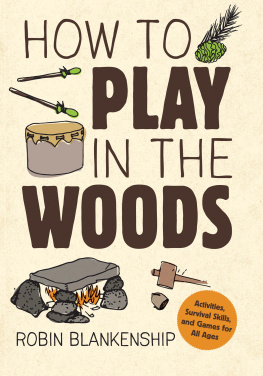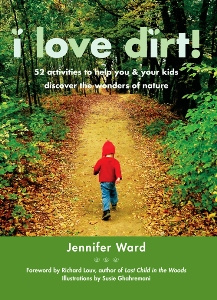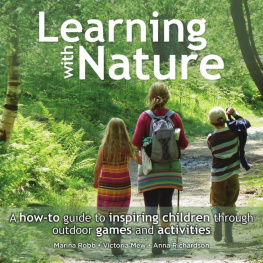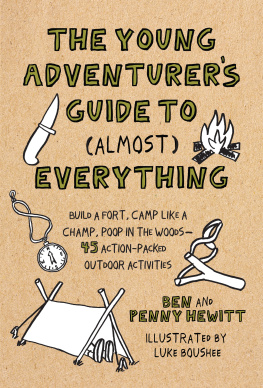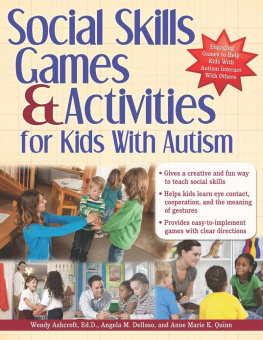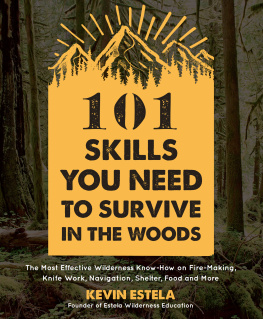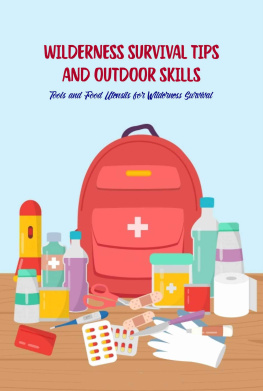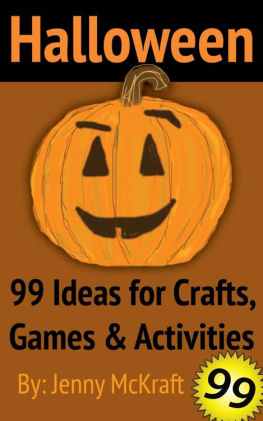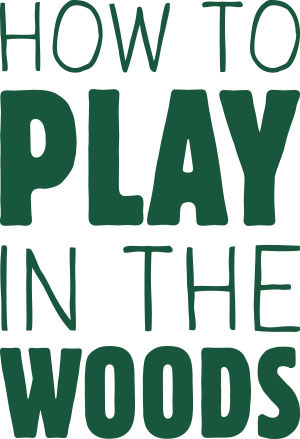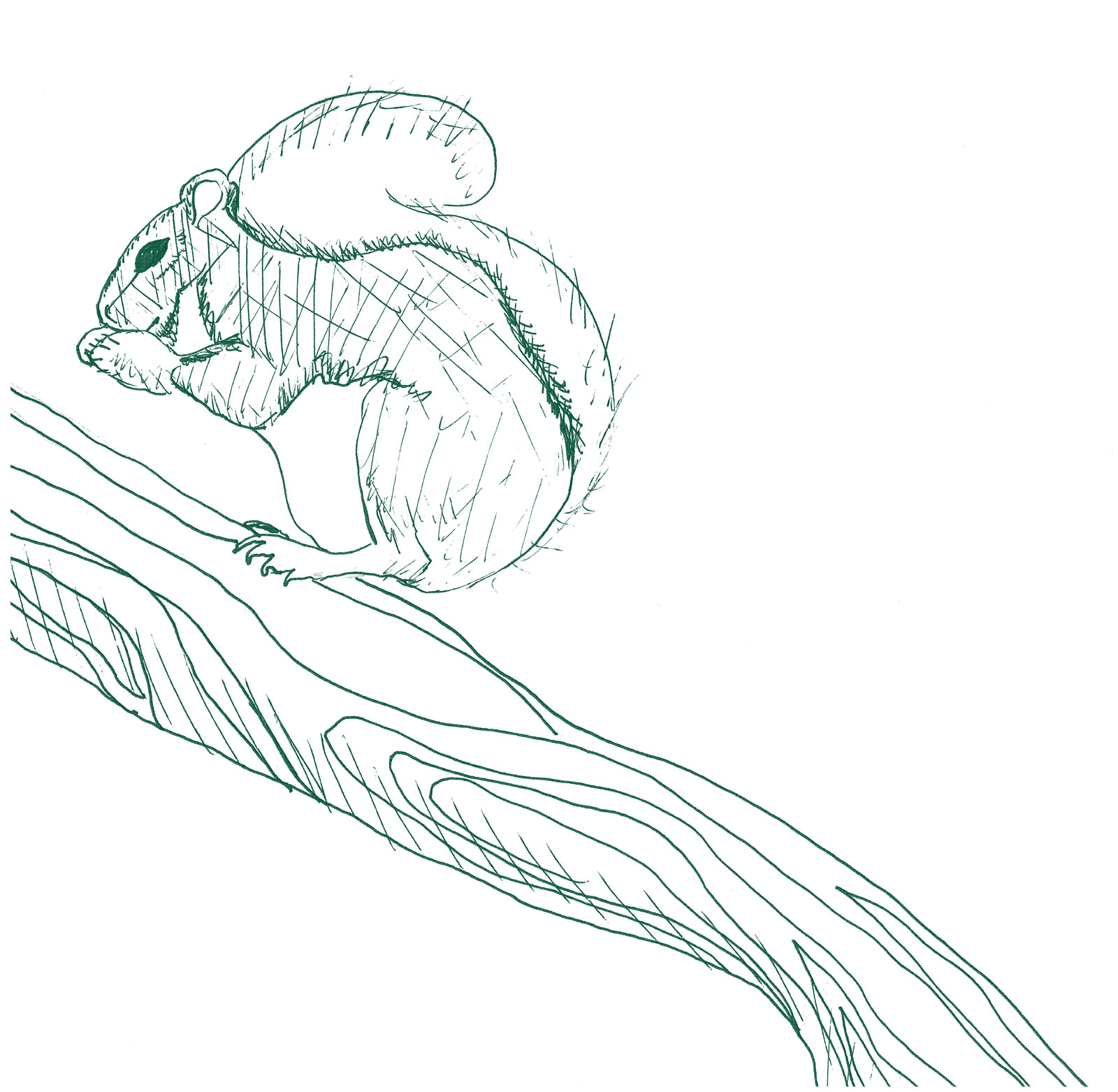How to Play in the Woods
Activites, Survival Skill, and Games for All Ages
Robin Blankenship
Illustrations copyrighted as noted throughout.

How to Play in the Woods
Activites, Survival Skill, and Games for All Ages
Digital Edition 1.0
Text 2016 Robin Blankenship
Illustrations by Robin Blankenship 2016 Robin Blankenship
Illustrations by Sky Hatter 2016 Gibbs Smith
All rights reserved. No part of this book may be reproduced by any means whatsoever without written permission from the publisher, except brief portions quoted for purpose of review.
Gibbs Smith
P.O. Box 667
Layton, Utah 84041
Orders: 1.800.835.4993
www.gibbs-smith.com
ISBN: 978-1-4236-4154-4
This book is written with gratitude, in memory of Melvin Manthey, who first taught me how to play in the woods.
Uncle Mel taught many children how to see the woods as a home. With a tattered-tail old crow named Charlie on his shoulder and an ornately carved and painted walking stick in hand, he would lead us through the woods to hunt for arrowheads and pottery shards, find wild onions and acorns, and see the hidden fox den and the thrushs invisible nest. He taught us to carve into wood the wonders we discovered, creating totem poles and great log drums. Under his care, we stayed out late at night, learning the names of the stars and the music of the barn owl.
He was not only a naturalist and artist, but also a writer. He made up epic stories, written in rhyme and meter in the style of Longfellow, of the history of the native people and the early pioneers in the Great Lakes area. Sitting on a mossy stump under an old spreading oak tree, he would read each newly written chapter of his tome, The Honey Bee Tree.
His stories, his artwork, his natural relationship with nature, and his selfless mentoring were the magic of my childhood.
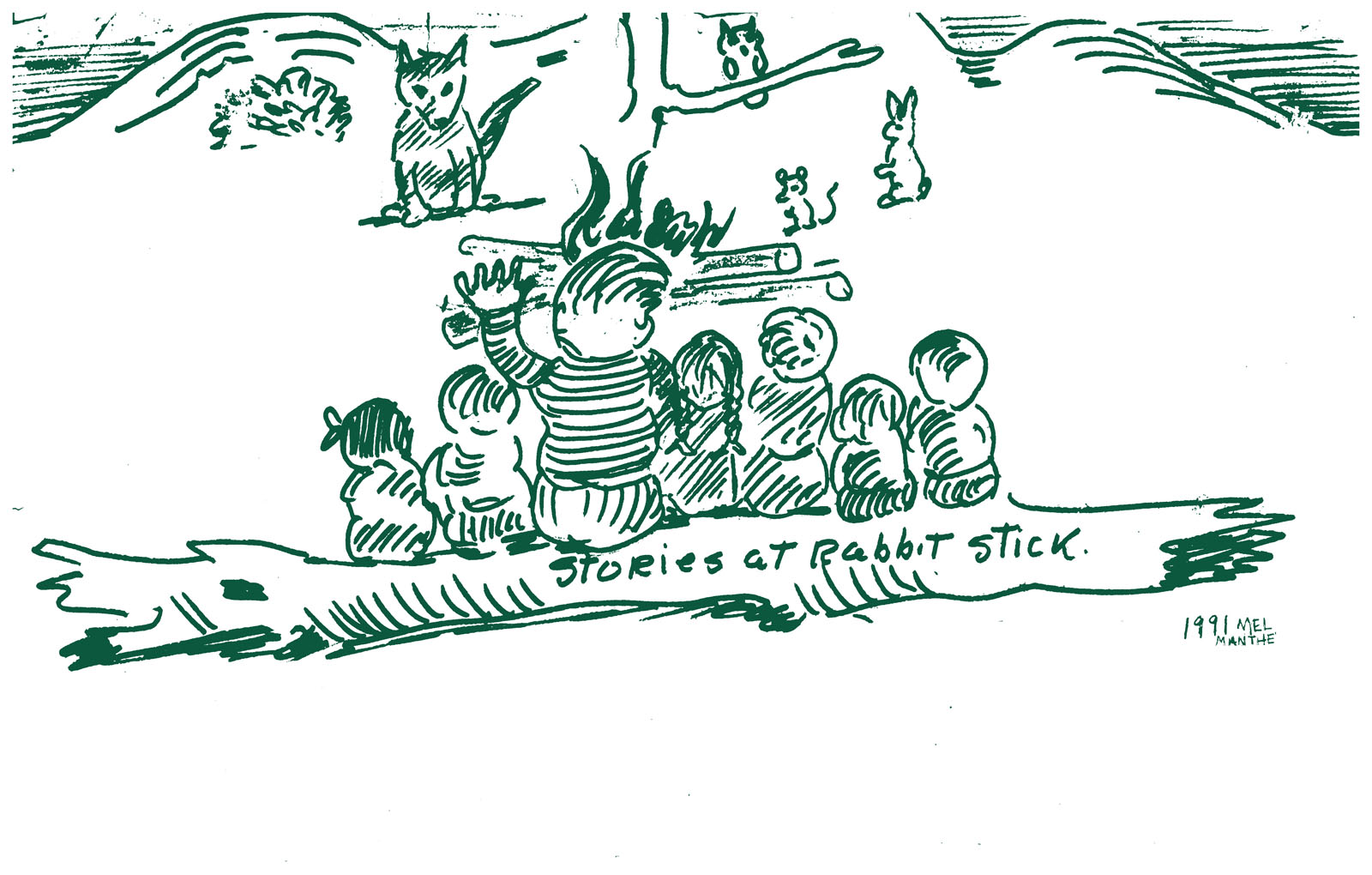
Illustration by Robin Blankenship
Introduction
Greetings happy, expectant readers ready for a good romp and some fun learning in the woods. Here you will find activities and ideas that help make time spent in the woods more interactive with nature, that encourage us to immerse ourselves in the outdoors more often, that remind us of the satisfaction we feel when we are capable, competent, healthy, and free from prescribed schedules and rules of play, and that help us remember, and relearn, the wisdom and ways of our ancestors in nature. These life ways have kept us alive, healthy, and fulfilled all these many years.
This knowing our ancient ancestors have passed to us, is alive in usin ways our modern sciences are just starting to investigateand ready to be remembered. Let the laboratories dig and dive, deciphering the data. Let the metaphysicians postulate and ponder, proffering philosophies.
Our job is to simply go play in the woods.
This said, I will address the current science, and sometimes share philosophical musings in these pages. If the referenced facts remind us why it is important to be in nature, and the musings stimulate a desire to cultivate deeper relationship with our natural world, good news. If, however, we are simply after the meaty facts that allow us to build a big bag of tricks for outdoor living and playing in the woods, more than enough will be found in these pages. Read it and stay focused on the goal of playing in the woods.
Activity descriptions in this book are preceded by one, two, or three arrowhead icons. If you are working with youth or wanting a progression of skills to work on yourself, from accessible and simple to more complex, you can begin by choosing a single arrowhead activitythe more difficult the activity, the more arrowhead icons.
Joy, health, and confidence to you!
Robin Blankenship
Make Music with Sticks and Stones
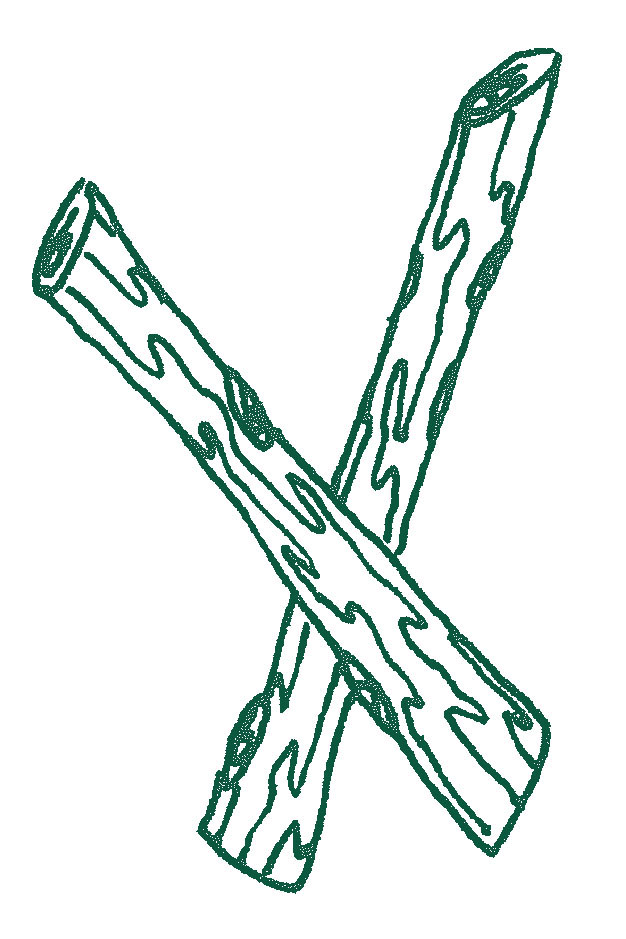
Illustration by Robin Blankenship
Have you ever picked up a stick and run it along a neighborhood fence line? A stick on a wooden fence makes a wonderful clack-itty-clack-clack-clack. Clack-itty-clack-clack-clack. A stick on chain link is stereo, reverberation.
Idea
In the beginning, there was music: the crash of a wave, roar of thunder, rustle of a leaf, the dribble, dribble, drop, drop, pitter, patter, plop, splitter, splatter, splash of a drizzle turning to a drenching. Somewhere at the front of the human timeline, your ancestor leaned down, picked up a stone or a stick, and played along to the rhythms of nature.
Do you think youre musical? Have you ever had a music lesson? Outside, the lessons are free, the instruments are abundant, and the teacher persistent and patient. Scheduling, focus, and diligent practice are not required.
Simple percussion beat with sticks and stones
Head outside, pick up a stone or a stick, and start your own jam. Clap your hands, tap your stones, clack your sticks, and become a member of the longest-running musical performance group ever. Youll be surprised once you start a stick-and-stone music session how many folks pop up to join you. The bigger surprise is how nature responds! Try it.
Design your musical sticks
Now that youre a musician, why not decorate those sticks and stones? Imagine walking around with a pair of matched, beautifully designed music sticks. They are right there in your back pocket any time you feel inspired to play. Sharpies or colored markers work well for designing, or simply dipping the ends of your sticks in colorful paints can be beautiful. Painting your musical rocks or putting fun designs around their edges with a marker somehow makes them feel more like instruments, and youll find yourself picking them up more often.
You can carve designs into your musical sticks, too, by using the edges of sharp rocks. Sharp rocks are great for carving in wood, but round smooth rocks make instruments that are easier to hold.
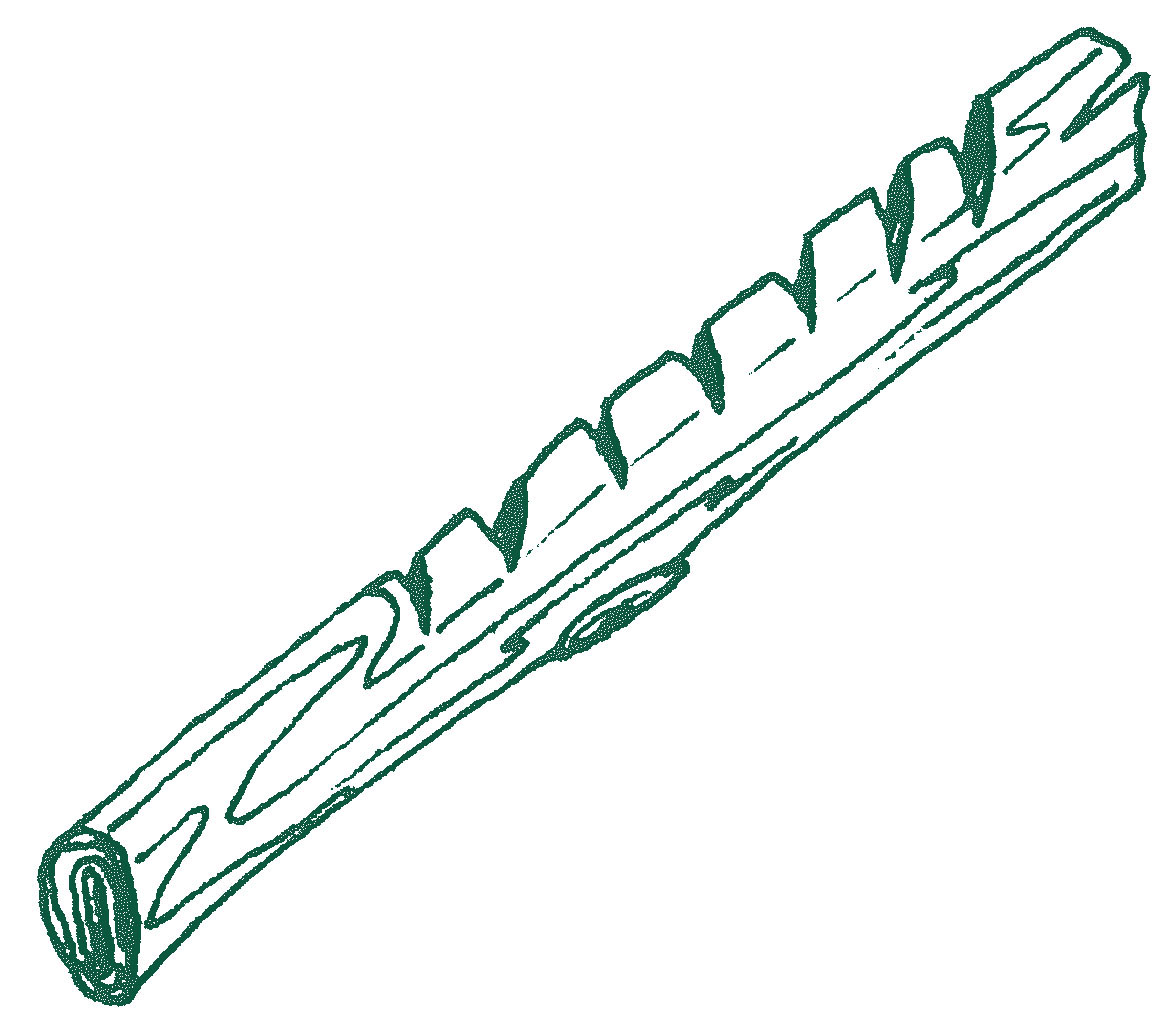
Illustration by Robin Blankenship
Throwing Sticks and Boomerangs
Have you ever picked up a stick and just thrown it at something? Of course you have!
It seems like the older we get, the less we pick up a stick, and certainly, the less we throw it at something. Perhaps because when we pick up a stick these days, and throw it at something, there is no practical application.

